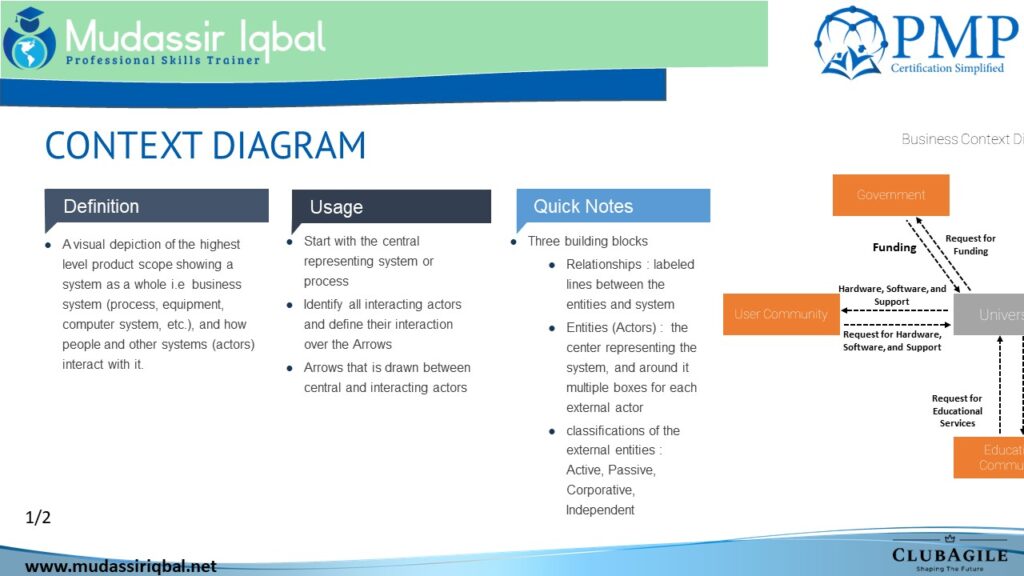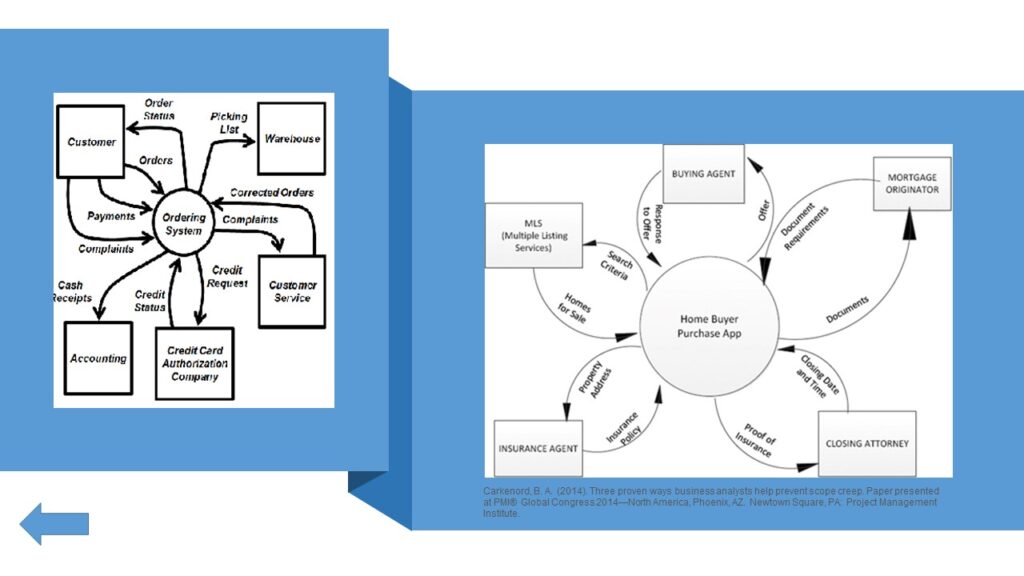A context diagram is a high-level diagram that shows the relationship between a system and its external entities. It is used to provide a clear and simple overview of a system and its interactions with other systems or actors.

The elements of a context diagram typically include:
- The system: This is represented by a rectangle and is the central element of the diagram. It represents the system or process that is being analyzed or designed.
- External entities: These are represented by rectangles and are the entities that interact with the system. These can include other systems, actors, or organizations.
- Arrows: These are used to indicate the flow of information between the system and the external entities. The arrows should be labeled with the type of information that is being exchanged.
- Data stores: These are represented by a parallelogram, and are used to indicate where data is stored or maintained.
- Terminators: These are represented by a circle, and are used to indicate the external actors that initiate or terminate the system.
Example of the Context Diagram
An example of a context diagram for an online shopping system might include the following components:
- The online shopping system itself
- Customers who interact with the system to browse and purchase products
- Payment processors to handle transactions
- Inventory management systems to track stock levels
- Shipping providers to deliver products to customers

Uses of Context Diagram
A context diagram can be used in a variety of ways, depending on the specific project or problem that it is being used to address. Here are a few examples of how a context diagram might be used:
- System design: During the initial stages of a software development project, a context diagram can be used to provide a high-level overview of the system that is being developed. This can help stakeholders to understand the system’s overall functionality and how it will interact with other systems or actors.
- Problem analysis: A context diagram can be used to identify the root cause of a problem by showing how different systems or actors interact. For example, if there is an issue with an online shopping system, a context diagram can be used to identify which external entities are involved and how they are interacting with the system.
- Communication: A context diagram can be used as a communication tool to help stakeholders understand a system and its interactions with other systems or actors. For example, a context diagram can be used to explain a system to a non-technical audience.
To use a context diagram, first, identify the system or process that you want to represent, and then identify the external entities that interact with that system or process. Draw rectangles to represent each of these entities and use arrows to indicate the flow of information between them.
It’s also important to keep it simple and high-level, to avoid overcomplicating the diagram and make it easy to understand for all stakeholders.

